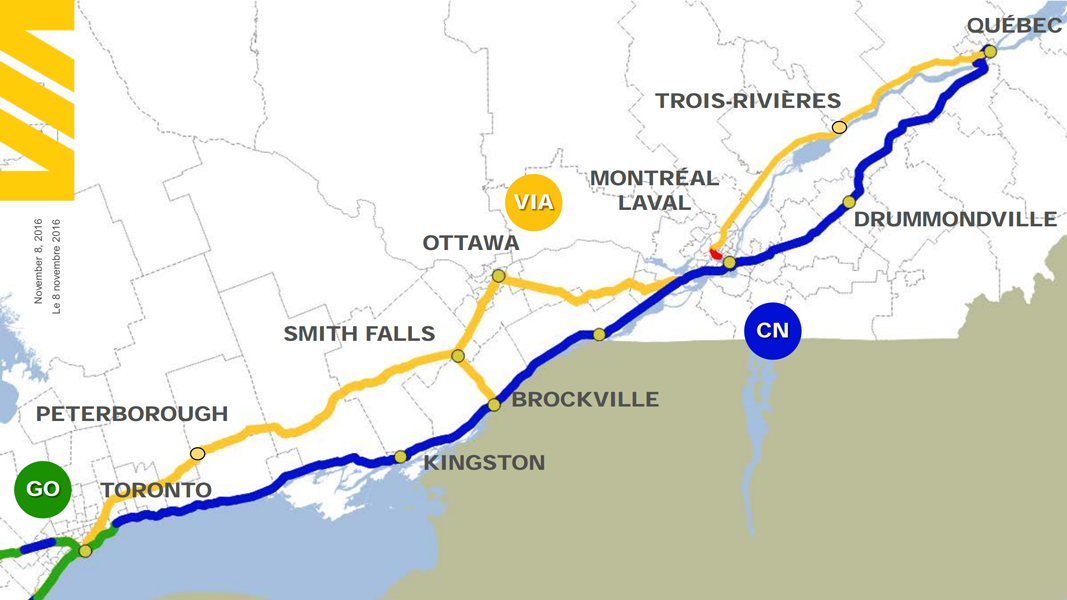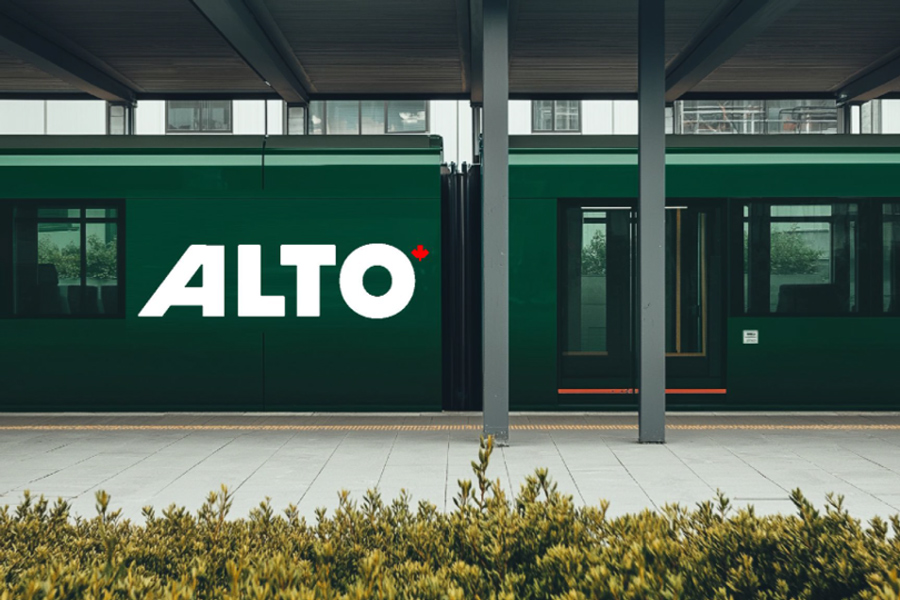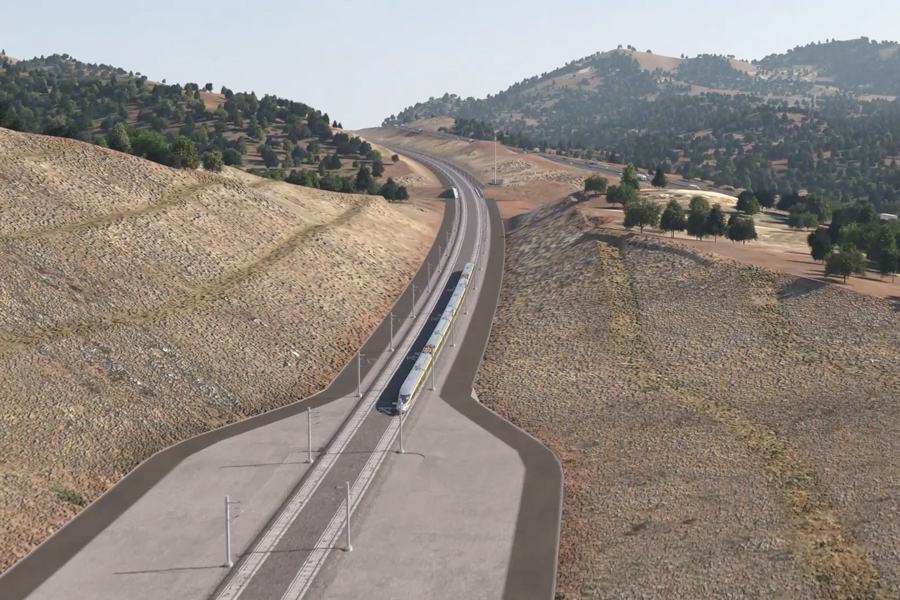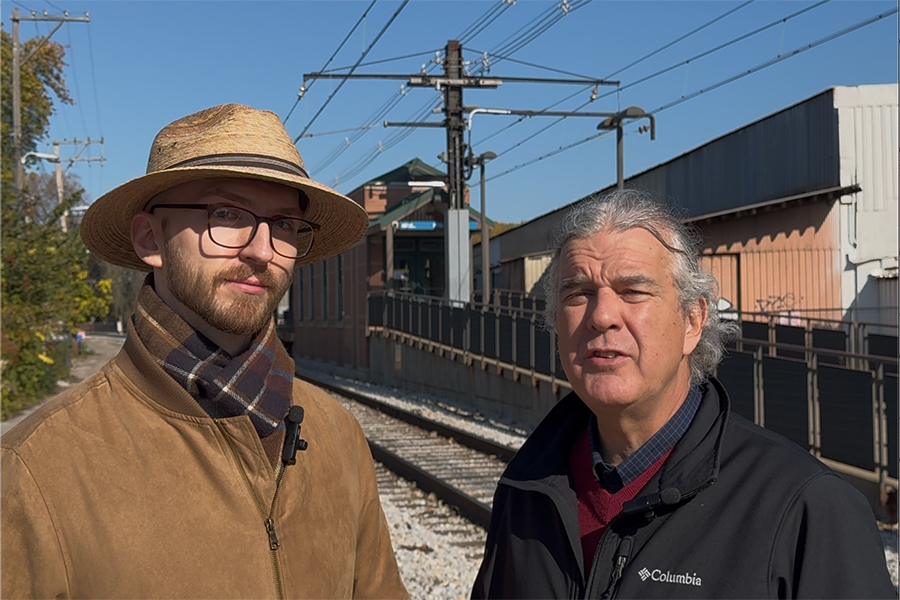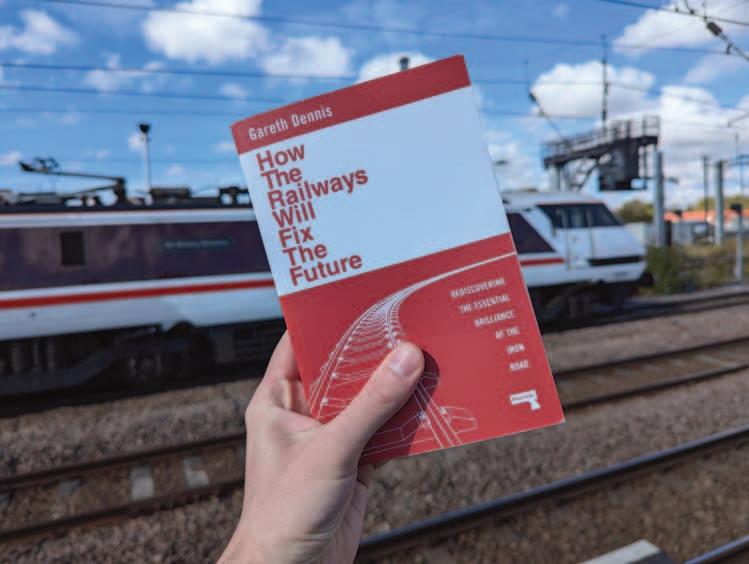More Amtrak equipment, California tunnels, Corridor ID on the list The movement to develop a great train network in the United States made undeniable gains in 2025: Illinois passed transit legislation worth $1.5 billion a year, which not only will continue to fund...
All systems go for new high-speed line connecting Quebec City, Montreal, Toronto—and someday Chicago?
A high-speed rail project that will link Toronto with Quebec City—known as Alto—is moving forward. At the organization’s annual meeting on Thursday, CEO Martin Imbleau promised that “by connecting more than 15 million people with faster, more reliable, and more sustainable travel, Alto will open the door to a new era of mobility in Canada.”
Former Prime Minister Justin Trudeau announced in February that Canada would move forward with the roughly 600-mile line linking Toronto to Quebec City via Montreal, Ottawa, and three smaller communities. The trains will run at a minimum of 186 mph, cutting travel times between Toronto and Montreal to a little over 3 hours (versus 5.5 hours driving). The travel time between Montreal and Quebec City will be about 1.5 hours (versus 3.25 hours driving).
Imbleau said the project will be built in several phases, with the aim of making the first segments usable to as many people as possible—as soon as possible. Construction will create at least 50,000 jobs, and the line will generate nearly $25 billion (Canadian) in new economic activity each year, which is roughly equivalent to 1% of the national economy. The trains will run on dedicated tracks, and the line will be almost fully electrified.
There are no specifics about the date of completion or the segments that will be built first. The planning phase is expected to take about five years. Construction on the early segments could be completed by the mid-2030s. Early plans call for the full line to be operational by the early 2040s.
“The best time to build high-speed rail in Canada was yesterday; the second-best time is now,” Imbleau said. “A strong transit system is the backbone of any modern economy. While other countries are investing heavily in fast and reliable mobility solutions to increase productivity, Canada is lagging behind—resulting in real economic, environmental, and human costs. Alto addresses these challenges.”
Get Involved
Tell Congress: It’s time to reconnect the country with high-speed and regional rail!
Three takeaways
Alto joins California’s San Francisco-to-Los Angeles line, Brightline West’s Las Vegas-to-greater-LA line, the High Desert Corridor, and Texas Central as North America’s true high-speed rail projects that are either under construction or have major design work underway.
It also opens up exciting possibilities for connecting Chicago and the Midwest with Canada by high-speed rail. The distance from Toronto to Chicago is roughly 500 miles. A line connecting the cities would run through Detroit, which has a metro population of 5 million people, as well as densely populated southern Michigan—with its vibrant mix of major corporations, community colleges, research universities, tourist attractions, and small businesses. The entire Chicago-to-Quebec City corridor is home to between 35 and 40 million people.
Alto’s leaders offer at least three ways for advocates to think about a national network of high-speed trains.
First, they highlight HSR’s under-the-radar but high-impact benefits. The FAQ page, for example, points out that Alto’s dedicated tracks will increase capacity for Canada’s freight railroads. (As in the US, Canadian passenger trains use tracks owned by freight railroads.) That’s important because, economically and environmentally, freight rail is a vastly better mode for moving goods than trucks. Gareth Dennis discusses this theme in How the Railways will Fix the Future and in the Alliance’s webinar with him. Watch it here. Similarly, Phillip Longman argues that healthy freight railroads are vital to America’s future. True high-speed rail requires dedicated tracks, which will allow freight railroads to increase their market share—if they’re willing and able to do so. We need to have that discussion.
Second, Alto is bold in framing the high-speed line as a generation-defining infrastructure project—the largest in Canada’s history, Trudeau called it—that will require (and repay) an all-in commitment. For example, Imbleau pleaded with young people in the annual meeting: “We need you. This is your service, and we need all the resources to develop it, to build it, and to operate this. Think of 1,000 kilometers and all the machinery that’s required, all the geological work that needs to be done. . . . We will need all the resources in the country. We will need people from Alberta to move to Quebec and Trois Rivières and Toronto. Because we will need the welders; we will need the workforce” to get it done.
Finally, Alto offers another model that states and regions can look to and learn from in developing and implementing their own high-speed rail projects. Alto is a government entity—a “federal Crown corporation”—created to manage the line’s construction. It will partner with and oversee a consortium of private companies—called Cadence—with expertise in design, engineering, construction, financing, and maintenance.
In the US, finding a healthy balance between public and private actors has been a major challenge—and key driver of high costs—for train and transit projects. Canada’s Minister of Transport and Internal Trade, Anita Anand, has promised that “we have assembled a unique group of talents, combining the know-how of a federal Crown corporation with the experience of a consortium of world-class private partners. Together, we will build a project that will surpass the highest expectations of Canadians.”
Whether it can clear that high bar or not, Canada’s project has plenty of lessons to offer as more high-speed rail projects in the US move toward the design and implementation stages over the coming years. Stay tuned.
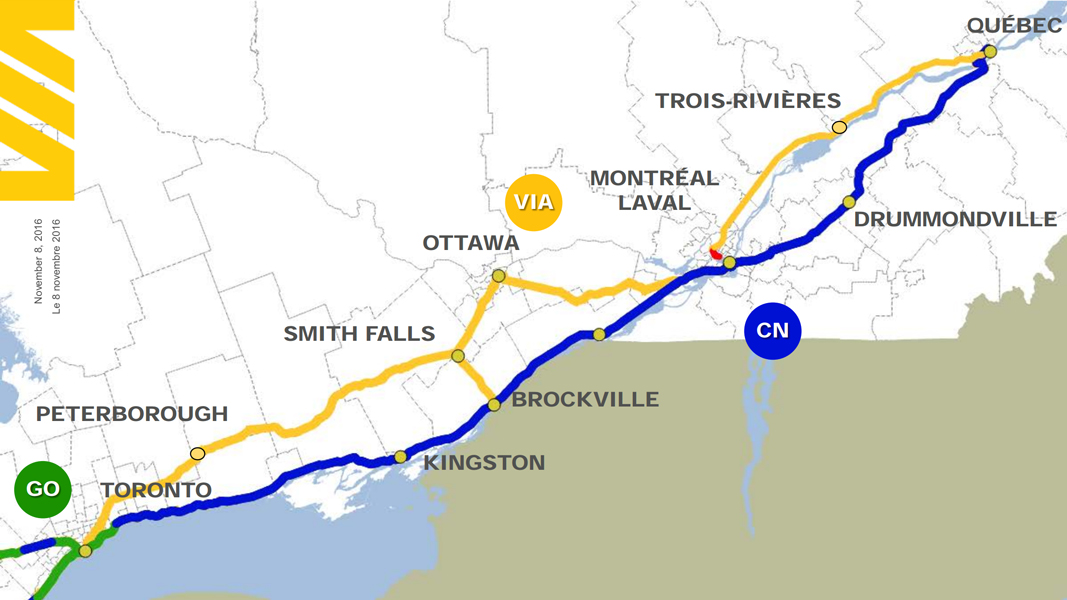
This map was issued by VIA High-Frequency Rail to illustrate a potential new route for a passenger-dedicated line, Alto will likely follow a similar path.
The Latest from HSRA
Our Latest Blog Posts
Check out the latest news, updates, and high speed rail insights from our blog!
